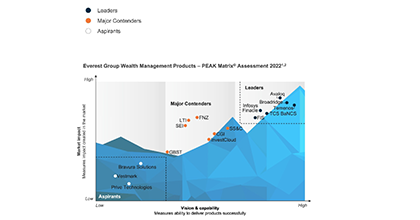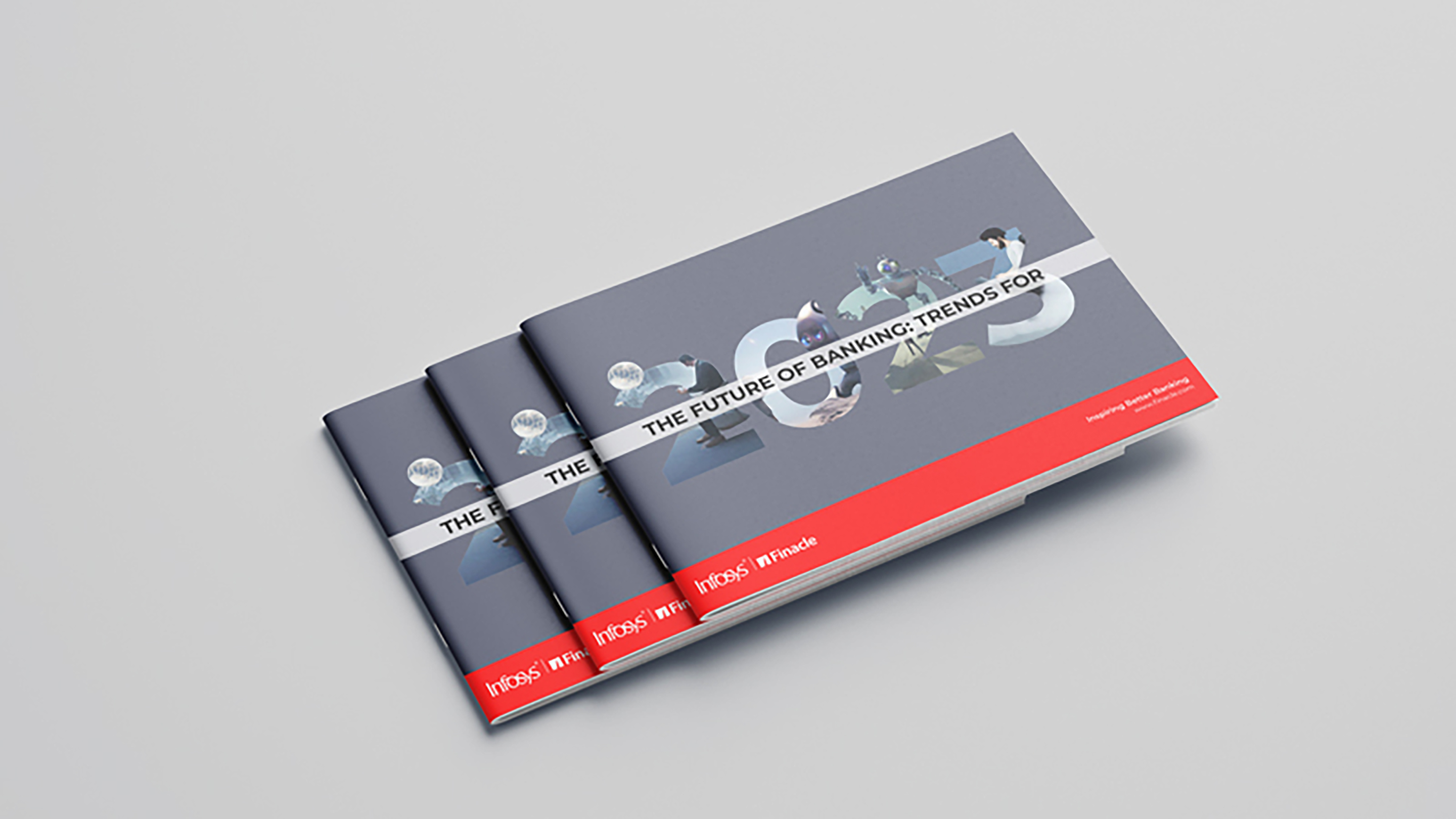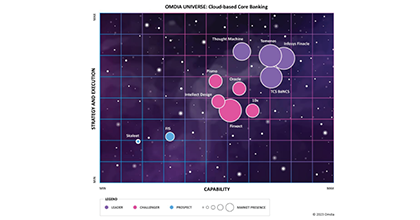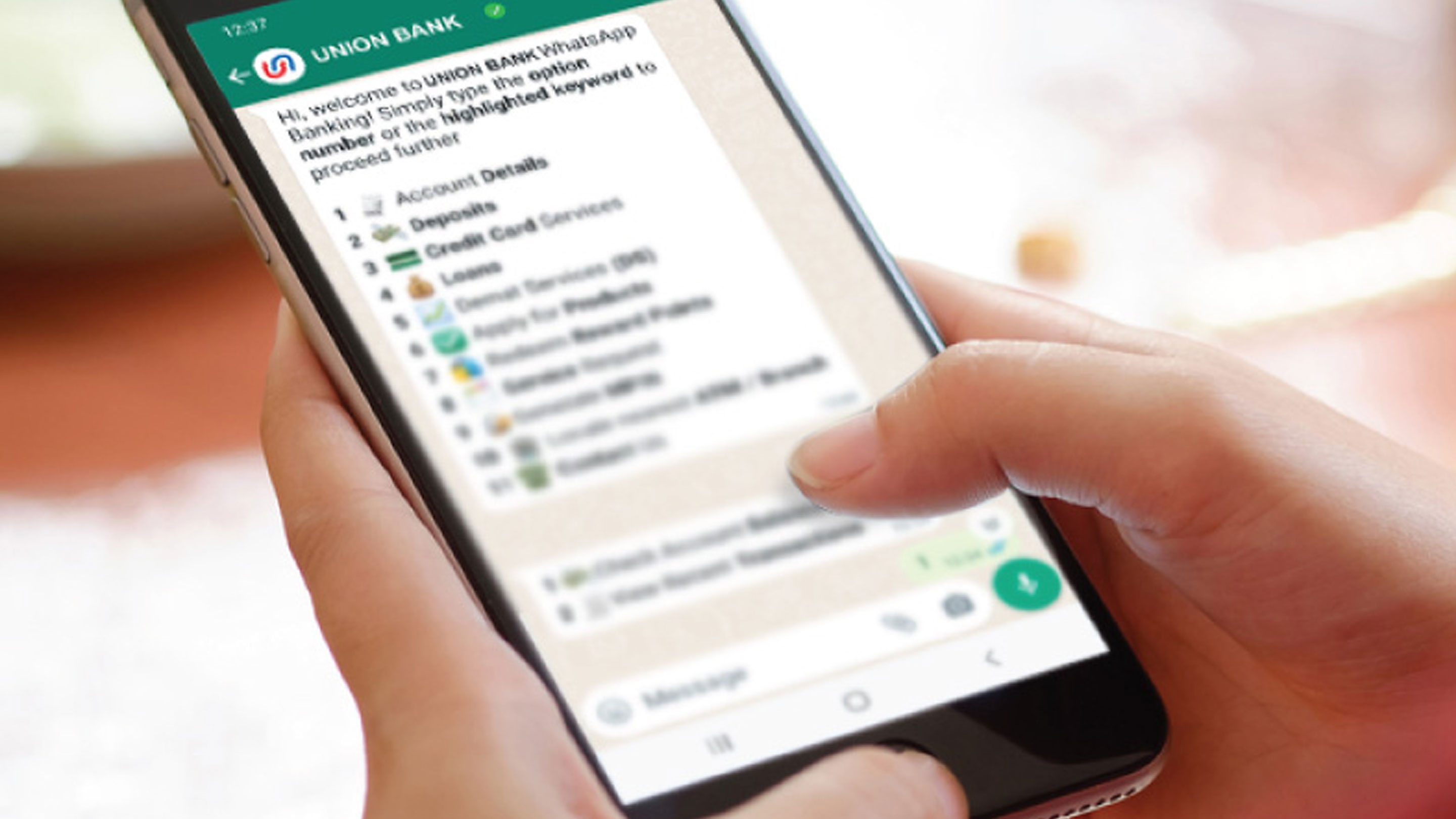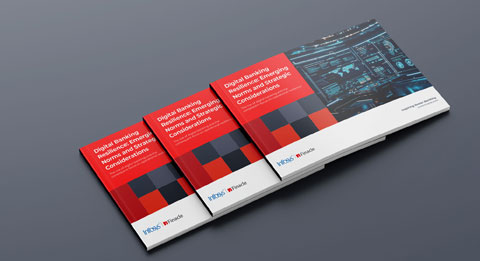-
![]() ESG in bankingESG-conscious banking should create new and future-proof value streams to build a sustainable and resilient business.Read More
ESG in bankingESG-conscious banking should create new and future-proof value streams to build a sustainable and resilient business.Read More -
![Everest Group PEAK Matri Everest Group PEAK Matri]() Everest Group PEAK MatrixA comprehensive solution delivering a full spectrum of wealth products as great experiences. It also improves the productivity of financial advisors and streamlRead More
Everest Group PEAK MatrixA comprehensive solution delivering a full spectrum of wealth products as great experiences. It also improves the productivity of financial advisors and streamlRead More -
![]() Subsidiary of an American Bank in IndonesiaFind out how a leading American bank adapts to a digitalized trade and supply chain finance operations as a part of its larger transformation by leveraging Finacle Trade Finance Solution Suite.Read More
Subsidiary of an American Bank in IndonesiaFind out how a leading American bank adapts to a digitalized trade and supply chain finance operations as a part of its larger transformation by leveraging Finacle Trade Finance Solution Suite.Read More
-
![]() Recomposing Banking: Leading the Digital ContinuumReport gives you a glimpse of the major areas where recomposing banking will create significant impact and value, Infosys Finacle has put together a report on..Read More
Recomposing Banking: Leading the Digital ContinuumReport gives you a glimpse of the major areas where recomposing banking will create significant impact and value, Infosys Finacle has put together a report on..Read More -
![]() Core Banking on Cloud: Navigating to the Fast LaneTake a deep dive into cloud-based core banking and explore the imperatives, opportunities and challenges, and the hallmarks of a robust solution.Read More
Core Banking on Cloud: Navigating to the Fast LaneTake a deep dive into cloud-based core banking and explore the imperatives, opportunities and challenges, and the hallmarks of a robust solution.Read More -
![]() Embracing Payments ComposabilityA step-by-step guide for maximizing Real Time Payment opportunities by embracing Payments Composability...Read More
Embracing Payments ComposabilityA step-by-step guide for maximizing Real Time Payment opportunities by embracing Payments Composability...Read More
-
![]() Shaping Banking’s Next: Banking Technology Trends for 2025 and BeyondThe banking industry has been balancing disruption and opportunity for several years now, and the pace of change shows no signs of slowing as we move into 2025 and beyond.Read More
Shaping Banking’s Next: Banking Technology Trends for 2025 and BeyondThe banking industry has been balancing disruption and opportunity for several years now, and the pace of change shows no signs of slowing as we move into 2025 and beyond.Read More -
![]() Virtual Accounts 2.0: Surpass Conventional Cash Management and Unlock Next-Gen PossibilitiesVirtual Account Management was a groundbreaking shift in the banking landscape, revolutionising use cases like cash concentration, pooling, centralised treasury management, and in-house banking (POBO, ROBO, COBO)Read More
Virtual Accounts 2.0: Surpass Conventional Cash Management and Unlock Next-Gen PossibilitiesVirtual Account Management was a groundbreaking shift in the banking landscape, revolutionising use cases like cash concentration, pooling, centralised treasury management, and in-house banking (POBO, ROBO, COBO)Read More -
![]() Unlocking Hybrid CloudAs banks push forward with their digital transformation agenda, cloud serves as a pivotal enabler. Each bank, at varying stages of adoption, crafts its unique path, dictated by context, regulations, and risk appetite.Read More
Unlocking Hybrid CloudAs banks push forward with their digital transformation agenda, cloud serves as a pivotal enabler. Each bank, at varying stages of adoption, crafts its unique path, dictated by context, regulations, and risk appetite.Read More
-
![]() Banking on CloudThis report from Infosys Finacle delves into the need for accelerating cloud adoption, highlights the current state of the industry, and puts forth key recommenRead More
Banking on CloudThis report from Infosys Finacle delves into the need for accelerating cloud adoption, highlights the current state of the industry, and puts forth key recommenRead More -
![]() Omdia Universe | Cloud-based Core BankingIn the report, Omdia highlights the following key capabilities of leading cloud-based core banking providers:Read more
Omdia Universe | Cloud-based Core BankingIn the report, Omdia highlights the following key capabilities of leading cloud-based core banking providers:Read more
-
![]() Emirates NBDEmirates NBD consolidates its operations on a single version for scalability, agility, and standardization.Read More
Emirates NBDEmirates NBD consolidates its operations on a single version for scalability, agility, and standardization.Read More -
![]() A Global Top 5 BankDiscover how a global top 5 bank headquartered in the US accelerated payments transformation.Read More
A Global Top 5 BankDiscover how a global top 5 bank headquartered in the US accelerated payments transformation.Read More -
![]() Union Bank of IndiaUnion Bank of India launches Union Virtual Connect (UVConn) by leveraging WhatsApp to provide customers personalized banking services.Read More
Union Bank of IndiaUnion Bank of India launches Union Virtual Connect (UVConn) by leveraging WhatsApp to provide customers personalized banking services.Read More

Prepare Your Data for Demand Planning: Your Step-By-Step Data-Tra
Blogs
Not all data is ready to give you insights. But it can be. In this blog post, we draw from our experience working with a global FMCG player to shed light on the processes that can power your data transformation.
To put simply, demand planning is the process of forecasting the demand of a product—which is then used to inform the manufacturing and distribution strategies of said product. Among retailers, demand planning is an integral part of supply chain management. Demand planning, when done well, has multi-fold benefits: It helps save money, manage product lifecycle better, improve marketing effectiveness, even heighten customer satisfaction.
But in today’s scale of operations, volume of data that is available, and the need for real-time insights, it is impossible to perform demand planning manually—over 54% of the companies surveyed in 2018 by the Sourcing Journal say that they frequently experience inventory imbalances. In fact, 13% say they do so ‘all the time’.
Technologies like artificial intelligence and machine learning can offer great value for demand planners, by crunching numbers meaningfully and at scale. It enables demand planners to work on real-time data and react to real-time market forces. But, given the maturity of AI tech today, it’s best to approach with caution.
In this blog post, we’ll outline the things to keep in mind while developing demand forecasting models for your AI engine.
Consolidate Your Data
The first step to building a demand forecasting model is to bring all your data to one place. Identify all data sources—explore all dimensions across geographies, channel partners, third party consolidators, products.
Once you’ve identified where you can source your data from, understand their tech maturity. Are all sources capturing data digitally? Even among digital data capture systems, there is a wide range from spreadsheets and emails to ERPs and CRMs. If your data is disparate, consolidate them. You might be able to leverage APIs and data pipes to achieve this.
Standardize Your Data
Once you’ve collated your data, you need to make sure the information is standardized. Procurement officers surveyed in the 2019 CPO survey by Deloitte complain that “poor master data quality, standardization and governance are the biggest problems to master digital complexity”.
To standardize your data, you need to identify the variance in data formats and use a unifying taxonomy like the United Nations Standard Products and Services Code (UNSPSC), Harmonized System (HS) or Central Product Classification (CPC).
Validate Your Data
Once you have your data standardized, but before syncing them, perform a thorough master data validation. Perform data cleansing first—for both historical and real-time data—without this, analysis would be tedious and possibly inaccurate as well. Once the data is validated, map them to your product hierarchy.
Synchronize Your Data
Set up clear, actionable processes for your data sync. For instance, outline what level of data (geo, region, distributor, store) needs to be synced, at what frequency does data need to sync with the master data, how the data is to be transferred (AS2, sFTP, XML) etc.
Set Up Data Extraction and Reporting
Once your data is synchronized, probably in a data lake on the cloud, enable reporting. Identify what kind of reports are necessary and build corresponding dashboards. For instance, if you need a demand planning dashboard, identify all the data points you need extracted, and pull them into your dashboard. For instance, for one of our clients—a global FMCG player—we brought data points across retail execution, e-commerce, inventory, secondary sales etc. to build their demand planning dashboard.
Some products like TradeEdge Market Connect have built-in dashboard templates that you can customize instantly.
Expand Your Data Footprint
Once the first set of data is ready for reporting, go back to the drawing board and explore other sources you might collect data from. Onboard all your channel partners into your demand planning system—hire the right onboarding partner to achieve this at high-accuracy at scale.
If you have all bases covered, identify other data dimensions you may have missed. Or see if you can increase the frequency or data flow. Study if there are any external factors—like seasonal changes, competitor promotions etc.—that can have an impact on demand for your products; include data from there too.
Remember that your insights are only as good as your data. Gathering, cleaning and optimizing your data is an important part of improving your demand planning.


©2025 -Edgeverve Systems Limited | All rights reserved

